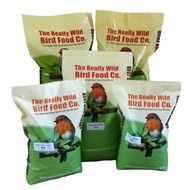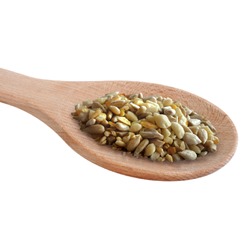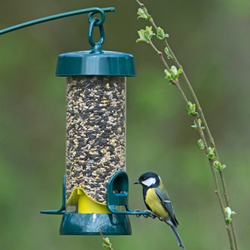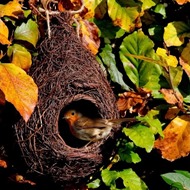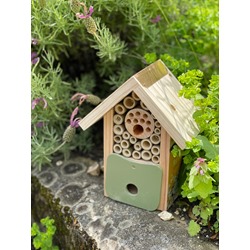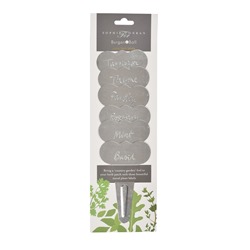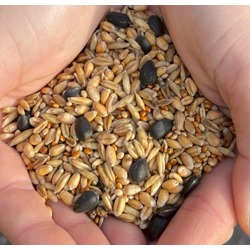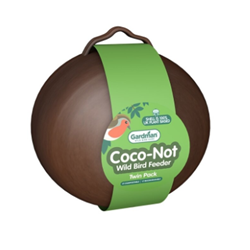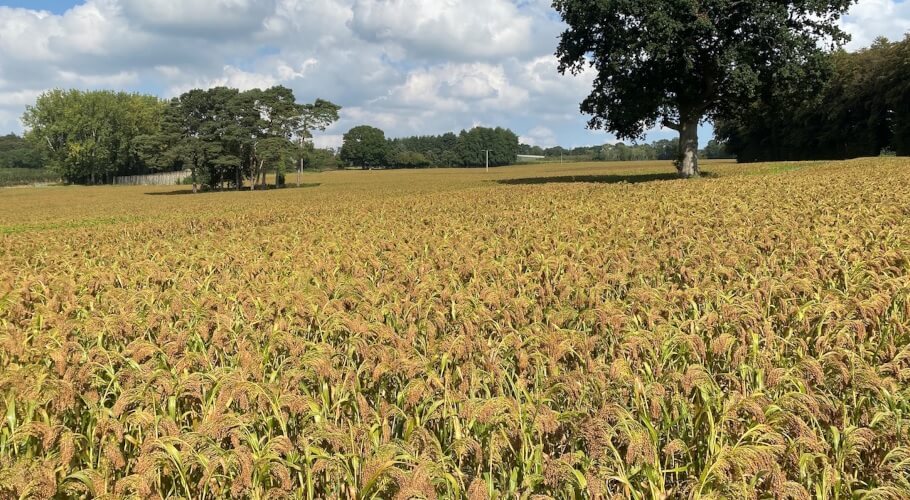
Autumn is the season for planting, and there are some big changes afoot for us this year!
Due to the de-regulation of some important fungicides, a disease caused by a fungus called Septoria tritici has become a real problem in winter wheat. This is especially so in wet years, such as the one we have just had. To help us control the disease, our plan is to drill the winter wheat a lot later than normal. Normally we would drill (plant) our wheat during the last week of September / beginning of October, but this year we will delay drilling until mid-to-late October and continue working well into November, since we have bought a new Triton direct drill which has been designed to work in wet soil conditions. This hopefully will allow us to drill even if autumn is very wet.
The fact that we direct-drill crops straight into the ground with no soil disturbance is key for driving towards net zero, since the carbon is retained in the soil and the worm population thrives which improves soil health still further. This new drill has been developed by a Cambridgeshire farmer, and we followed its progress for 3 years before deciding to buy one this autumn. We like it because it is British made and it is simple to use. So we're keeping our fingers crossed for great things with it. We have already tested it out on our cover crops and they are coming up really well. So far so good!
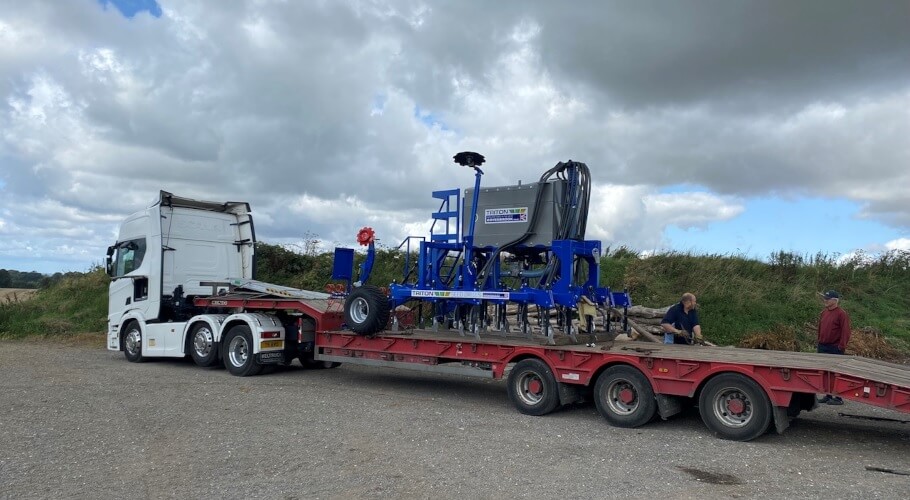
Exciting day! Our new Triton drill arrives.
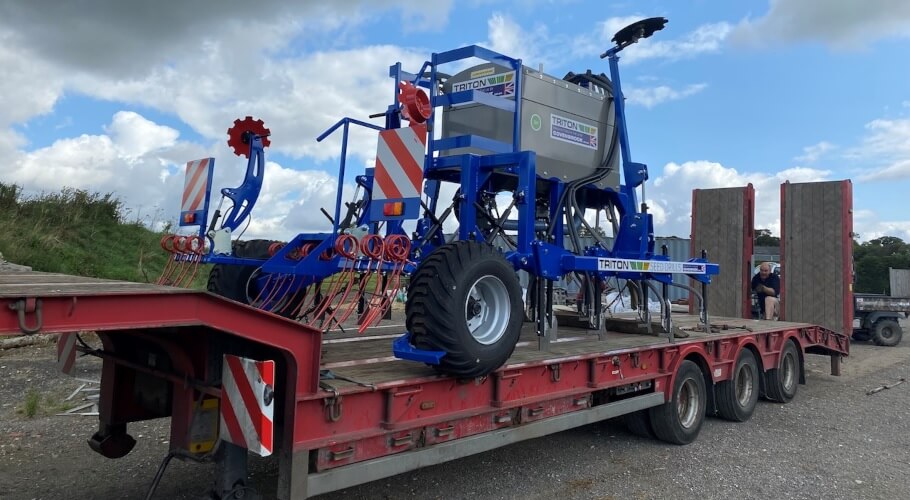
Quite a wide load! Taking it off the low loader is a nerve-wracking experience.
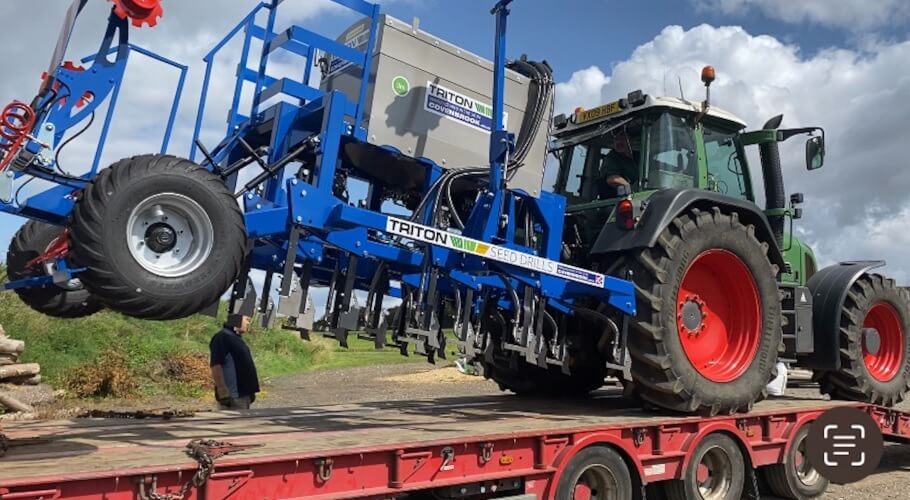
Easy does it, Merv! This job is not for the faint-hearted.
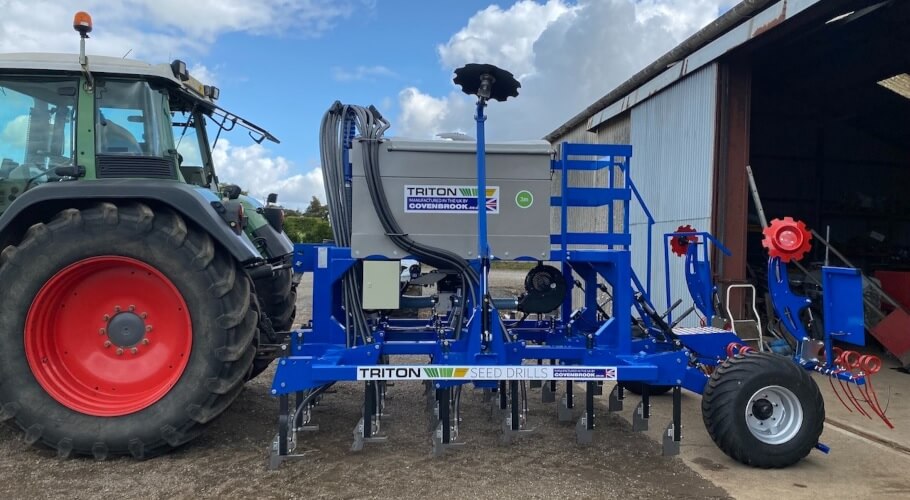
Then safely put to bed. Job done!
The new Rake 'n' Roll is a-rakin' and a-rollin'!
After harvest, there is a lot of chopped straw left lying on the fields and it needs to be moved to allow the weed seeds to 'chit'. Our old straw rake wasn't doing this well, which meant we had a lot of weeds growing when we cultivated for the next crop. So we have invested in a Rake 'n' Roll - which does just that!
The rake moves the chopped straw and the roller presses the weed seeds down onto the surface of the soil, helping to create a really good chit ready for cultivating. One thing I have learnt is that, left to their own devices, weeds will take over the world - and managing them can be incredibly challenging for farmers, so even things like improving the chit on weed seeds is key in the fight against the weeds!
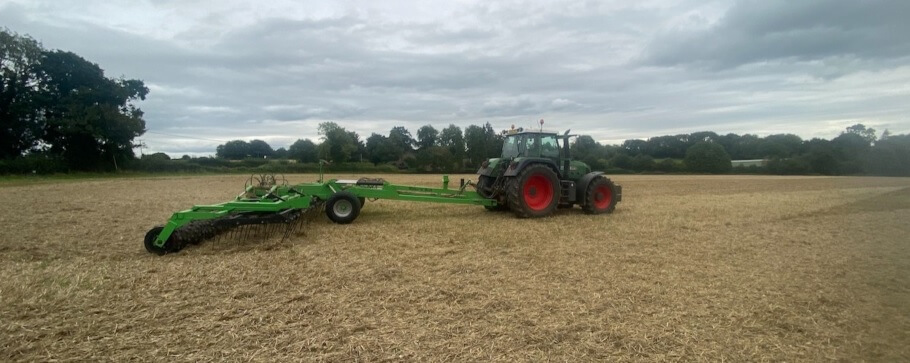
Rake 'n' Roll! The rake moves the chopped straw, and the roller presses the weed seeds down onto the surface of the soil.
Our millet (home grown for your garden birds) is looking very strong this year. We still have both our red millet and our white millet to harvest. We dessicate them to help dry the grains and make it easier to combine, and we usually harvest them a fortnight after dessication, so not long to go now.
We had a large storm a few nights ago, with very high winds and 33mm (1.3 inches) of rain. Richard was very worried, expecting to see a lot of the crop flattened, but he was relieved to find that it was still standing. We don't want too many of those evenings, though - especially at this critical time just before harvest!
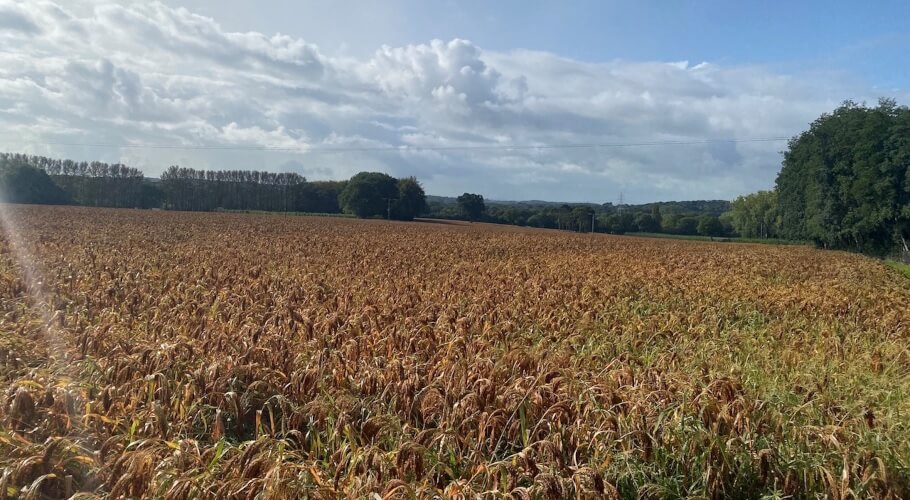
A big crop of red millet! Due to be combined in the next week or so - weather permitting. Our white millet crop is pictured at the top of the page.
Yesterday we harvested our spring beans, which was a month later than last year. This crop was planted late due to the wet spring and took longer to ripen due to the wet weather. We were delighted to see about 400 swallows all making the most of the bruchid beetles (also known as bean seed beetles) that were coming off the beans as the combine went through them.
Beans are a brilliant insect source for swallows that feed on the wing. From about June to September, the beetle larvae bore into the beans where they feed for several months, pupating within the seeds as they dry in the field. Adults then emerge, leaving a circular hole in the beans. We are pleased the swallows are still here and able to make the most of the last insect flush of the year. We wish them well on their travels and hope to welcome them back in the spring. I always feel very blue when the swallows depart.
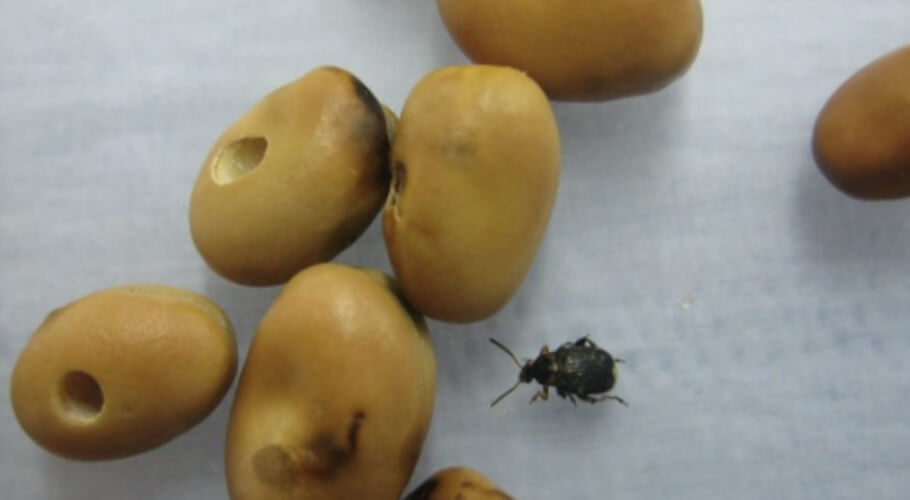
A bruchid beetle (and the damage it causes).
It's been a bumper nut harvest this year!
The score so far: Richard 1, Squirrels (nearly) 0.
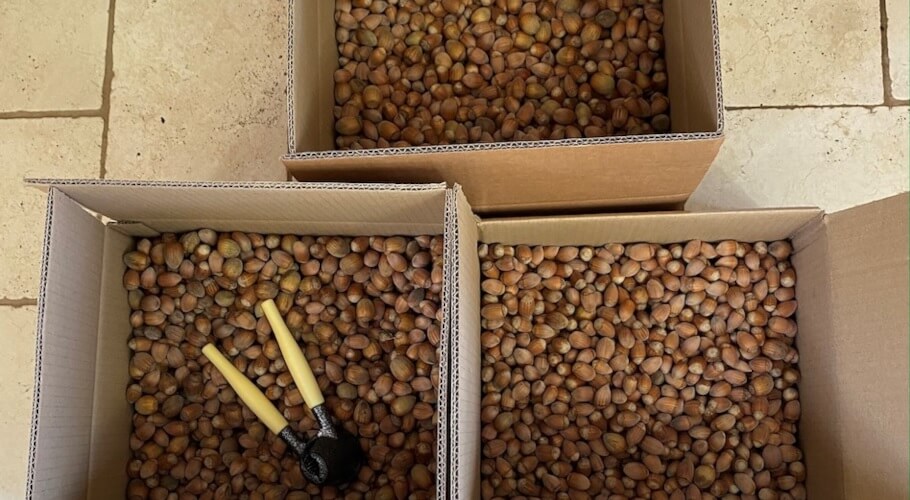
We have three nut bushes in the garden and this year Richard is triumphant! Not just because of the weighty 7.4kg of filberts and Kentish cobs that he has harvested, but also because he beat the squirrels to them! This doesn't happen often - the squirrels usually have them - so we will really enjoy the victory this year.
The hedgerows (and nut bushes) seem to be abundant with fruits and berries this year, and garden birds usually desert gardens in favour of nature's offering. Birds are also moulting their wing feathers at the moment. Moults usually last around a month and during that period the birds can't fly so adeptly and are less waterproof, so they tend to spend a lot of their time sheltering in hedges and bushes, away from predatory sparrowhawks. You may not know this, but sparrowhawks only moult one wing feather from each wing at a time, which enables them to continue to fly fast and predate on our smaller garden birds.
As a consequence, feeding sites will be quiet at the moment and this is an excellent time to give your feeding stations, feeders and patio areas a really thorough clean and disinfection in preparation for the winter months. Check out our Feeder Hygiene range.
September's Seed of the Month: Native Finch Mix
Save 10% in September, plus fast free delivery!
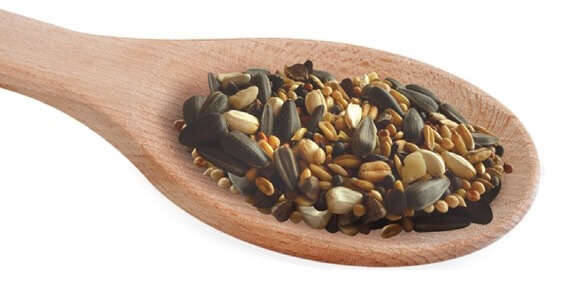
Our Native Finch Mix is a delicious, high-oil seed mix that includes millet, oilseed rape, wheat, naked oats, plain canary seed with black sunflowers, and to make it even more tasty, we have added niger seed (which goldfinches particularly love). All of these ingredients make this mix the perfect bird food for finches.
Buy Now >>
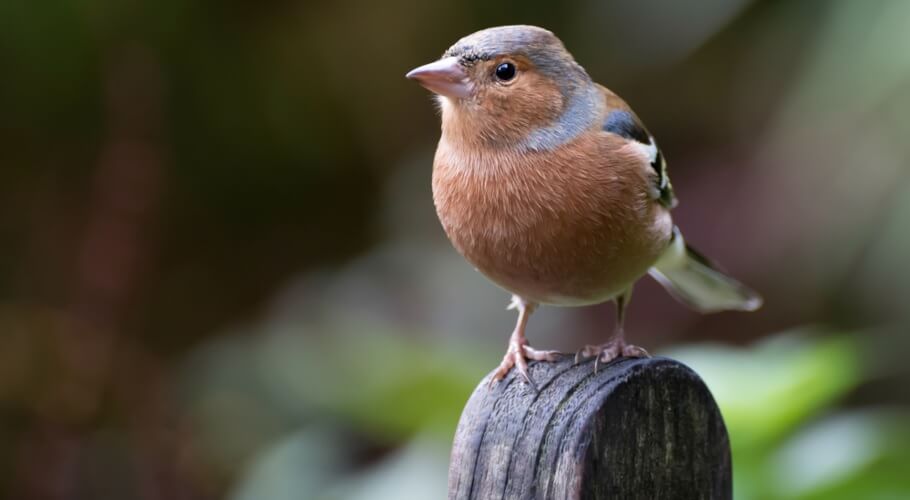
One bird that may still be around in good numbers are chaffinches, which have finished breeding and can be spotted in flocks, enjoying the autumn bounty. Throw some Native Finch Mix into bushes and hedges and watch them enjoy.
* * *
Well, that's my September news so far. Enjoy your birds and - with my veterinary hat on - please use this quiet time to give your feeders a thorough clean.
Thank you for your custom!
Very best wishes,
Lesley
P.S. Ness had her first tractor ride last week - and she was super-attentive! Here she is checking out how straight Richard's lines are :)
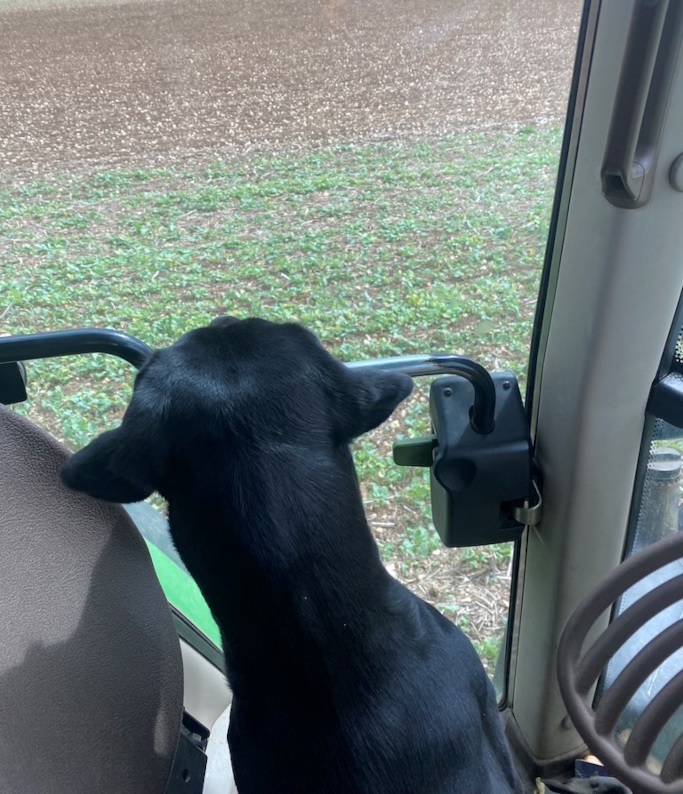

 Back
Back Bird Feeders
Bird Feeders  Seed Feeders
Seed Feeders Peanut Feeders
Peanut Feeders Peanut Butter Feeders
Peanut Butter Feeders Suet & Fat Feeders
Suet & Fat Feeders Window Feeders
Window Feeders Hanging Feeders
Hanging Feeders Feeding Stations
Feeding Stations Ground Feeders
Ground Feeders Easy Clean Feeders
Easy Clean Feeders Bird Tables
Bird Tables Seed Trays
Seed Trays Bird Baths & Drinkers
Bird Baths & Drinkers Feeder Accessories
Feeder Accessories Feeder Hygiene
Feeder Hygiene Squirrel Proof Bird Feeders
Squirrel Proof Bird Feeders For the Kids
For the Kids Niger Seed Feeders
Niger Seed Feeders Mealworm Feeders
Mealworm Feeders Bird Food Storage
Bird Food Storage Fat Ball Feeders
Fat Ball Feeders Tube Feeders
Tube Feeders



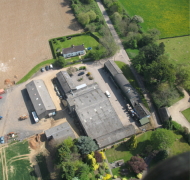 Our Farm
Our Farm  Tips & Advice
Tips & AdviceContact Us

